AWS Solutions Architect Associate Certification
Services Compute
Elastic Beanstalk Demo
In this guide, we demonstrate how to deploy a simple Node.js application using AWS Elastic Beanstalk. The application is a basic web app that displays the message "Okay, this is Elastic Beanstalk demo." Elastic Beanstalk automates the provisioning and management of your infrastructure, including EC2 instances, load balancers, security groups, auto scaling, and other AWS resources.
Let's walk through the process step-by-step.
1. Creating an Application in Elastic Beanstalk
First, log in to the AWS Management Console and search for "Elastic Beanstalk." Under Applications, click Create an Application. Assign a name (e.g., "Node.js app"), optionally add a description and tags, then click Create. This will take you to the application dashboard, where you can manage multiple environments, such as development, staging, or production.
2. Creating a New Environment
Click to create a new environment. Since you are deploying a web application rather than a background task, select the Web Server Environment option.
- The application name will be pre-populated.
- Name your environment (e.g., "environment-prod" for production).
- Optionally, assign a custom domain or use the auto-generated one.
- Provide a description if needed.
- Select Node.js as your platform and choose the appropriate version.
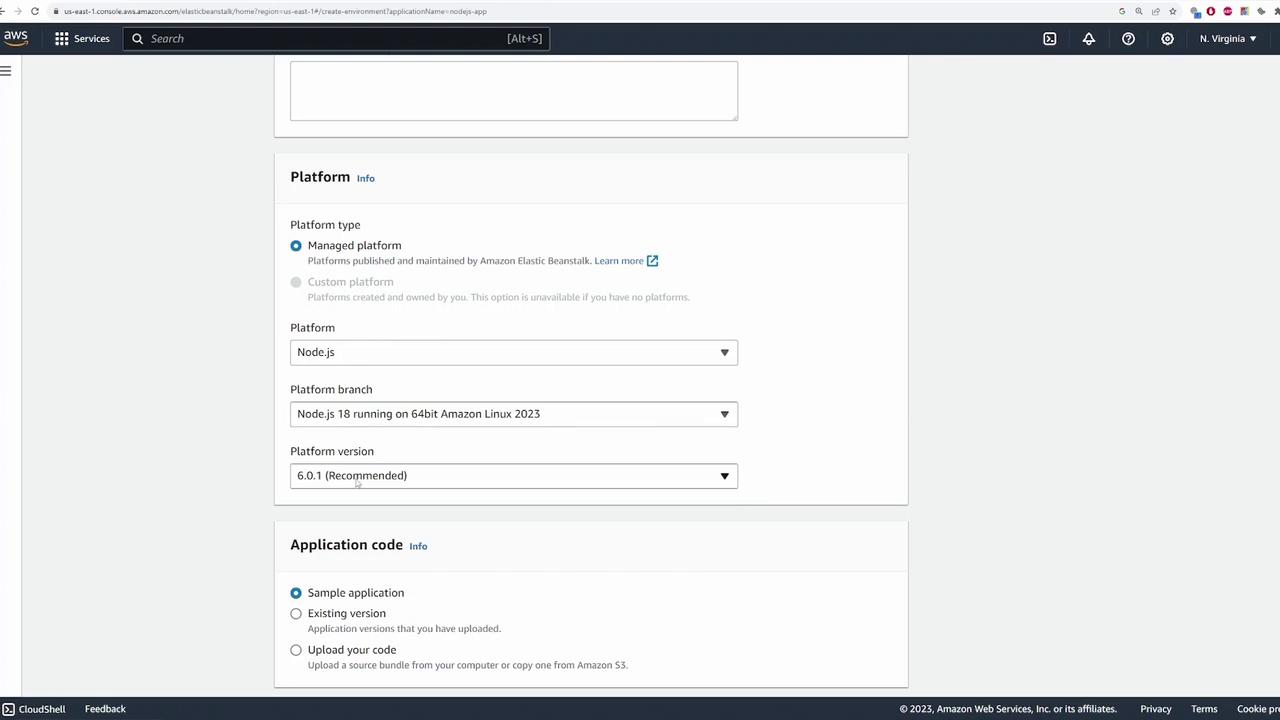
3. Uploading Application Code
Under the Application Code section, choose to upload your code. You can either store your code in Amazon S3 or upload it directly from your computer. For this demonstration, click Choose file. Note that Elastic Beanstalk requires a ZIP archive containing your application’s source code.
To prepare your deployment package:
- Copy all necessary files.
- Create a ZIP archive (e.g., "EB demo-v1.zip").
Once the ZIP file is ready, select it for upload.
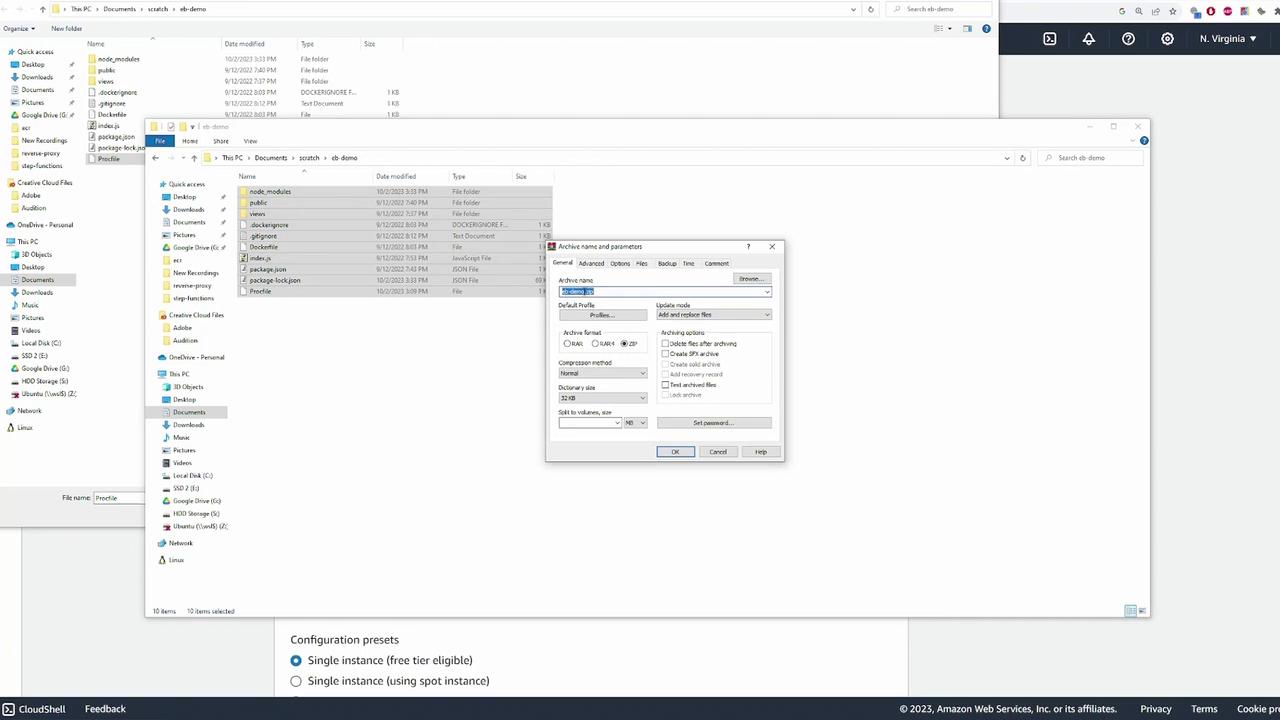
4. Configuration and Presets
Proceed through the configuration wizard. Elastic Beanstalk automatically populates many settings from presets. For this demo, choose a high availability deployment using multiple EC2 instances behind a load balancer. Even when using presets, you can adjust the settings later.
Before moving to the next step, assign a version label for your application code (e.g., "1.0.0") and click Next.
5. Setting Up Service Roles and EC2 Key Pairs
Elastic Beanstalk requires an IAM service role to perform AWS operations. If you do not have an existing role:
- Select Create and use new service role to have one generated automatically.
- Alternatively, choose an existing role if available.
Similarly, assign an EC2 key pair or create a new one if needed.
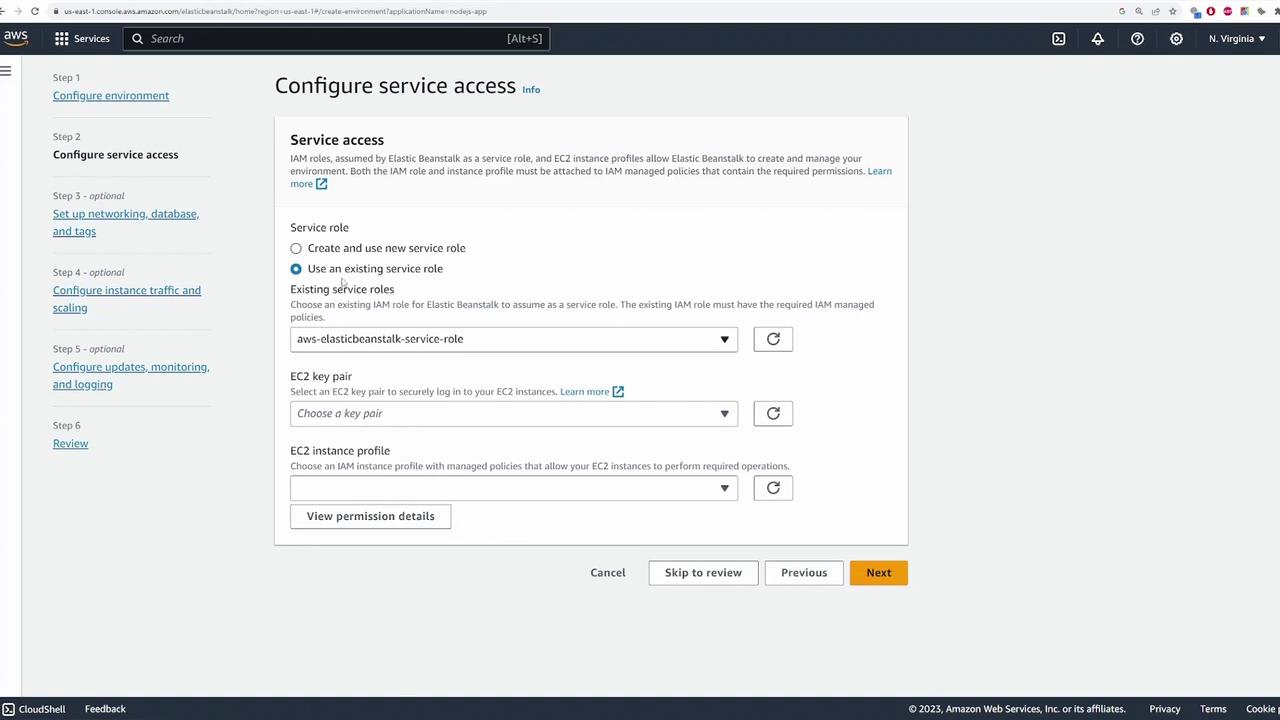
6. Configuring VPC, Subnets, and Database
Choose the Virtual Private Cloud (VPC) and subnets for your deployment:
- Use two private subnets for EC2 instances (which don’t require direct public access).
- Deploy the load balancer on two public subnets.
Optionally, you can enable an associated database, though this demo leaves that option disabled. Additional tags can be added if required, and default settings for attached storage volumes are retained.
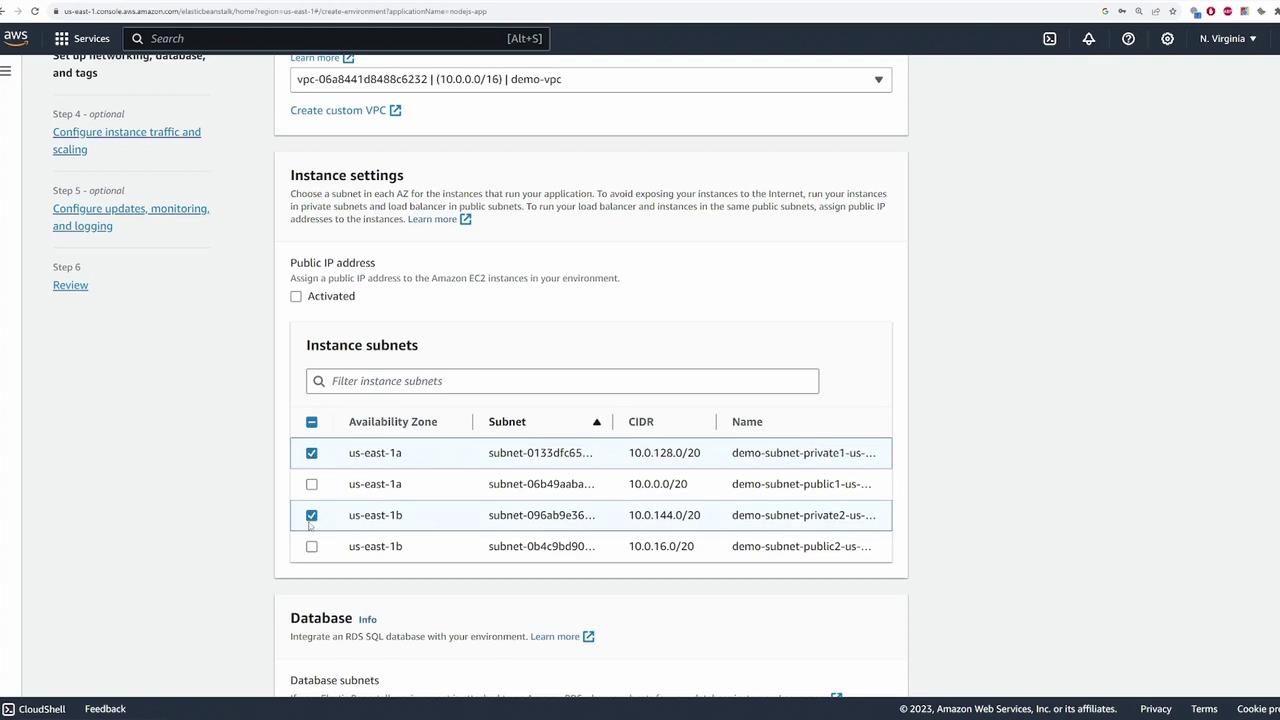
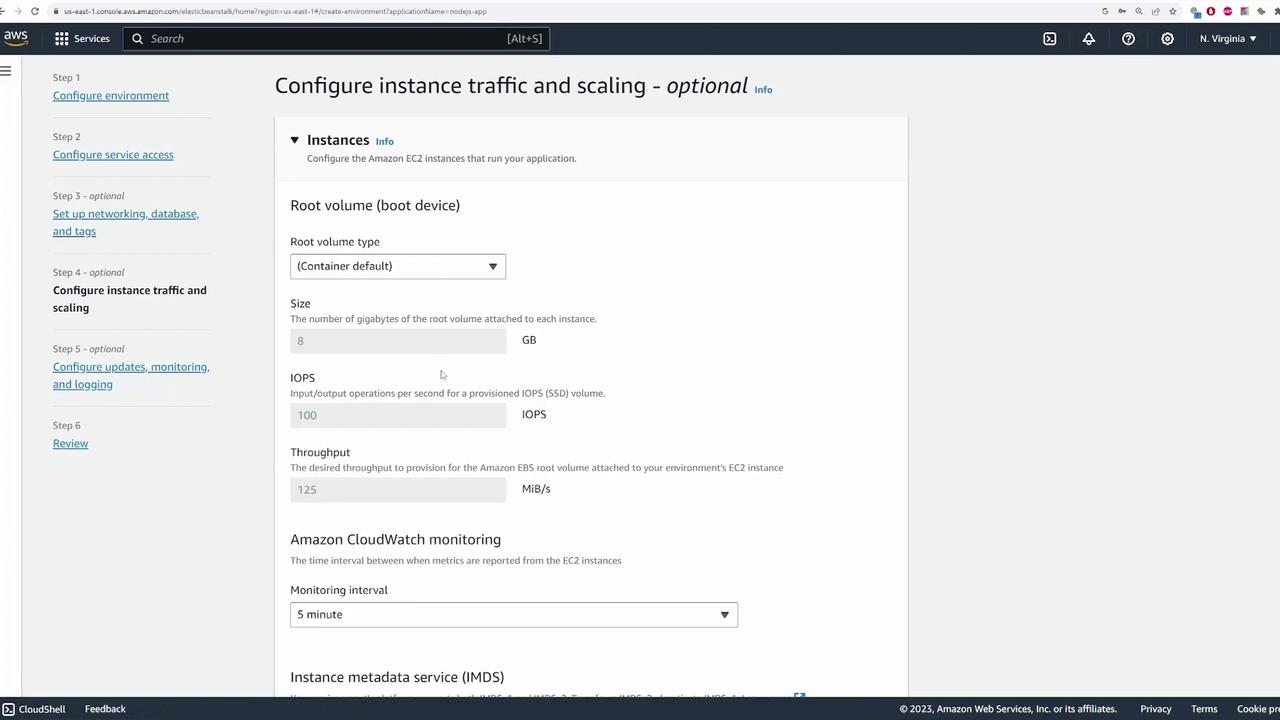
7. Configuring Security Groups and Auto Scaling
Next, configure the security measures and scaling preferences:
- Select the security group provided by your VPC.
- Configure the auto scaling group by setting:
- The minimum number of instances (e.g., one instance).
- The maximum number of instances (e.g., four instances) based on anticipated load.
The demo uses on-demand EC2 instances with default architectural settings, instance types, and the Amazon Linux AMI.
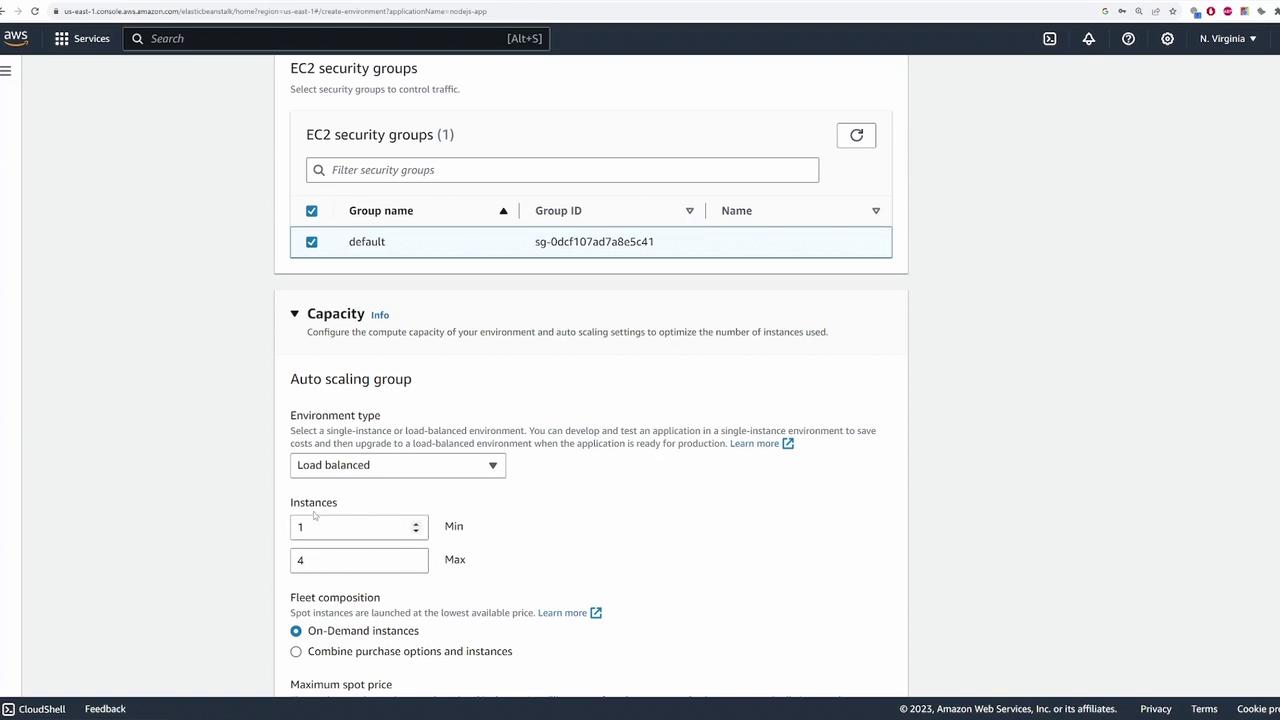
8. Configuring the Load Balancer
Configure your load balancer to ensure proper distribution of incoming traffic:
- Deploy it on public subnets.
- Choose the Application Load Balancer type with a dedicated load balancer.
- Update the listener settings:
- The load balancer listens on port 80 by default.
- Since the Node.js application listens on port 3000, modify the listener configuration to forward HTTP traffic accordingly.
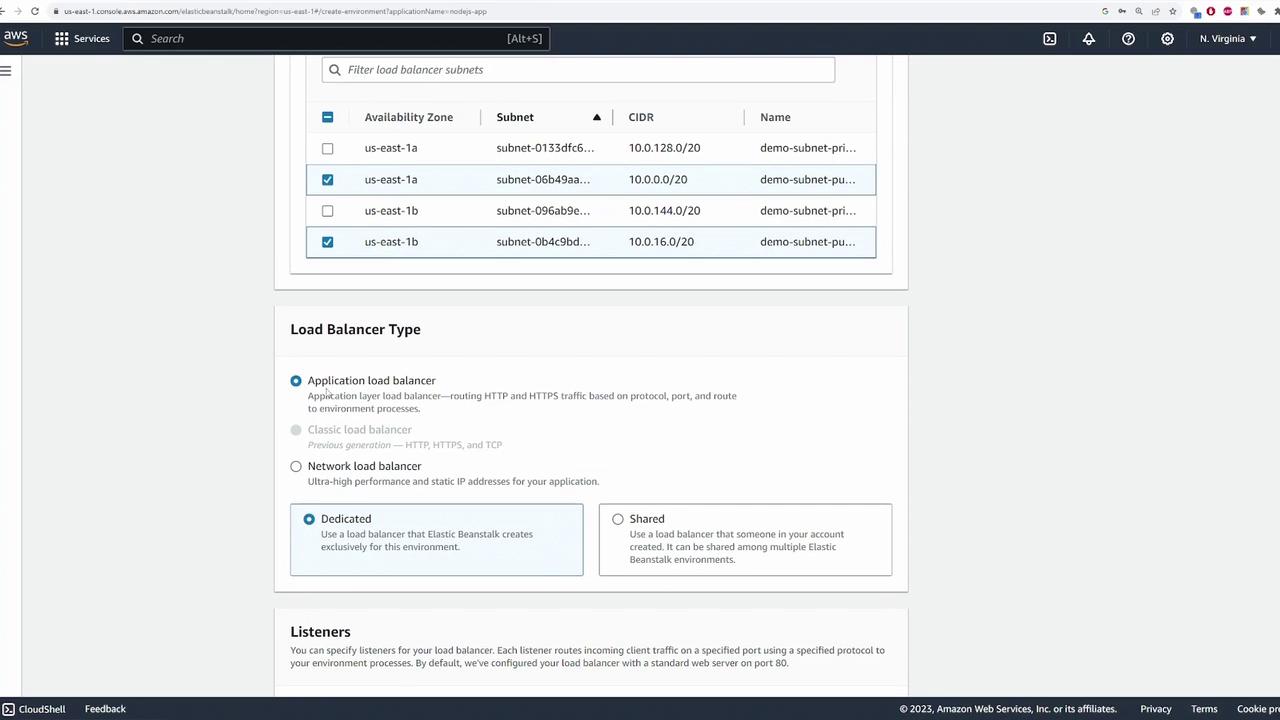
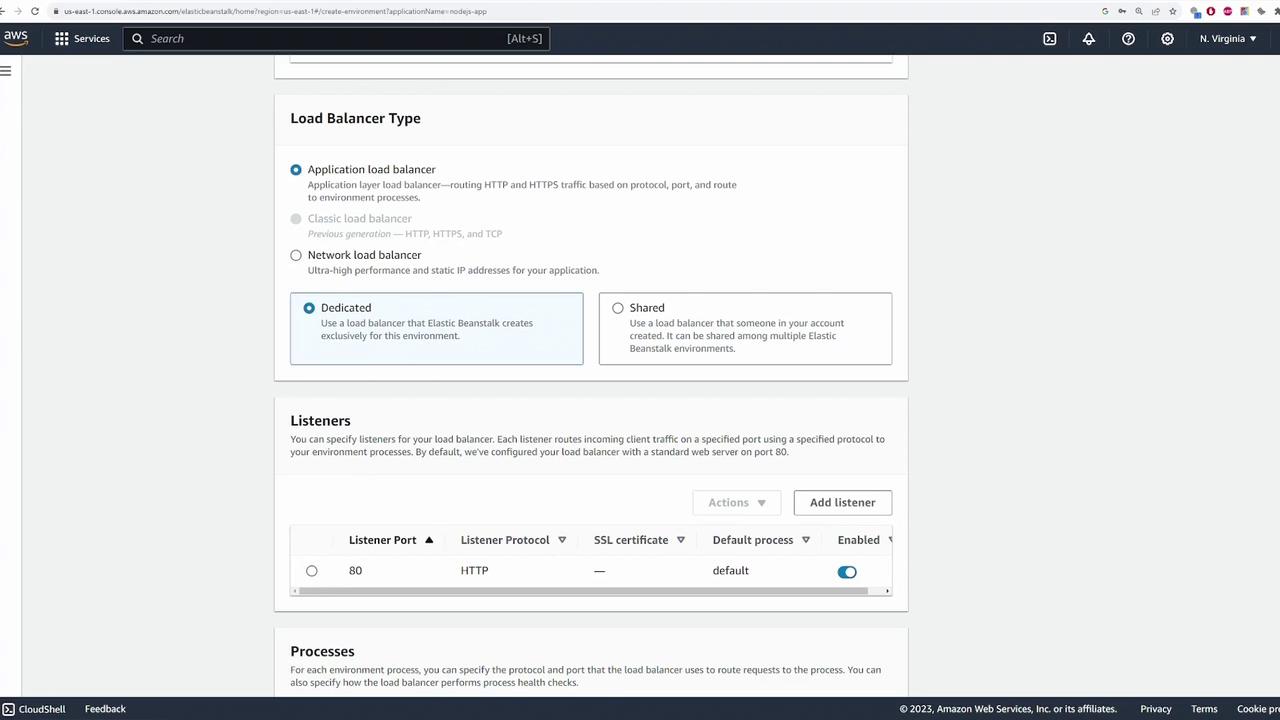
9. Monitoring and Deployment Settings
Head to the monitoring section and adjust settings based on your requirements:
- Customize options for health reporting, CloudWatch custom metrics, and managed updates if needed.
- For this demo, the default configuration is retained, and managed updates are disabled.
- Configure email notifications and set deployment policies, such as choosing a rolling update to minimize user impact during code deployment.
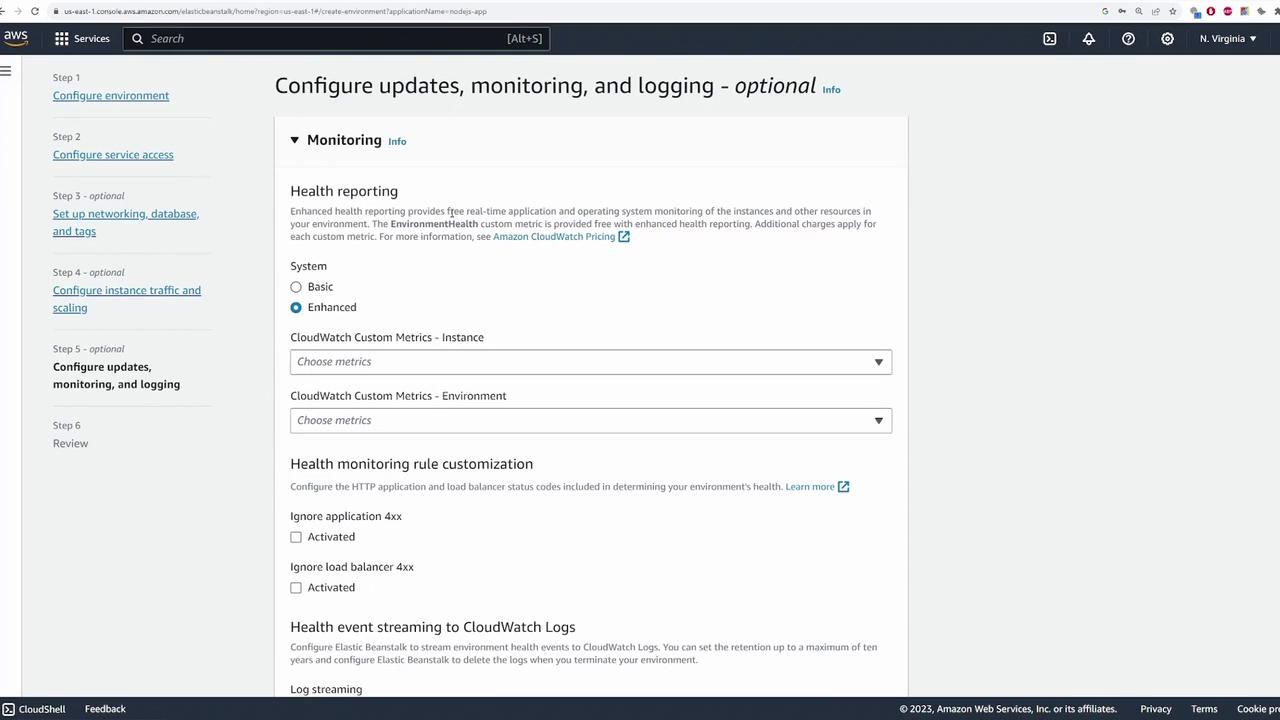
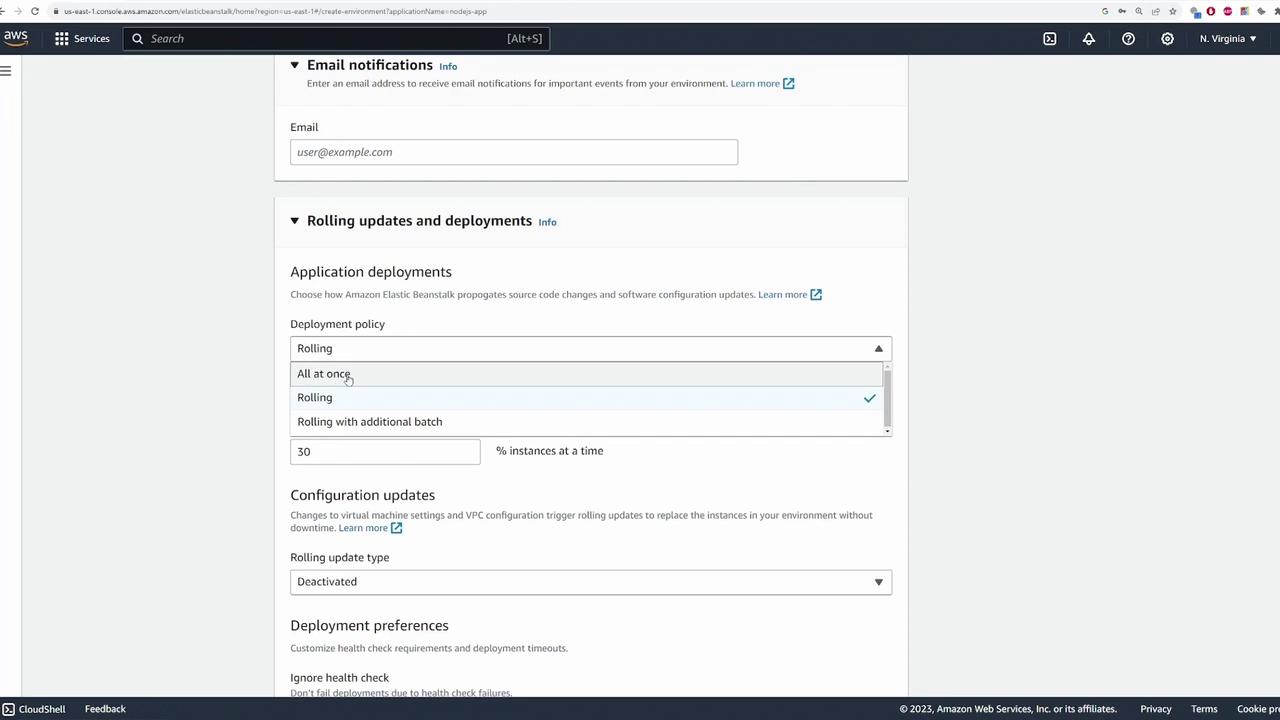
Review your configurations, and once you’re satisfied, submit the settings. Elastic Beanstalk will provision the environment and deploy your application, a process that may take a few minutes.
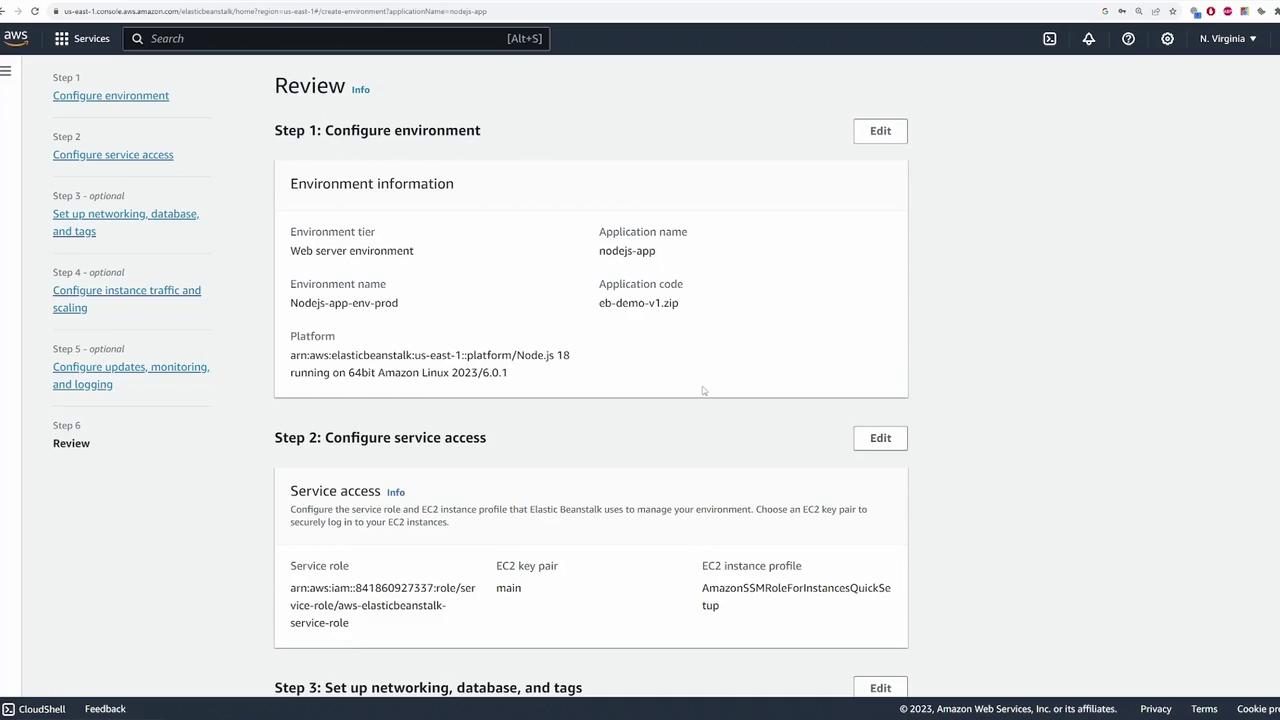
10. Verifying the Deployment
After the environment shows a successful deployment, click the provided domain name to access your application. You should see that version 1.0.0 of your application is running.
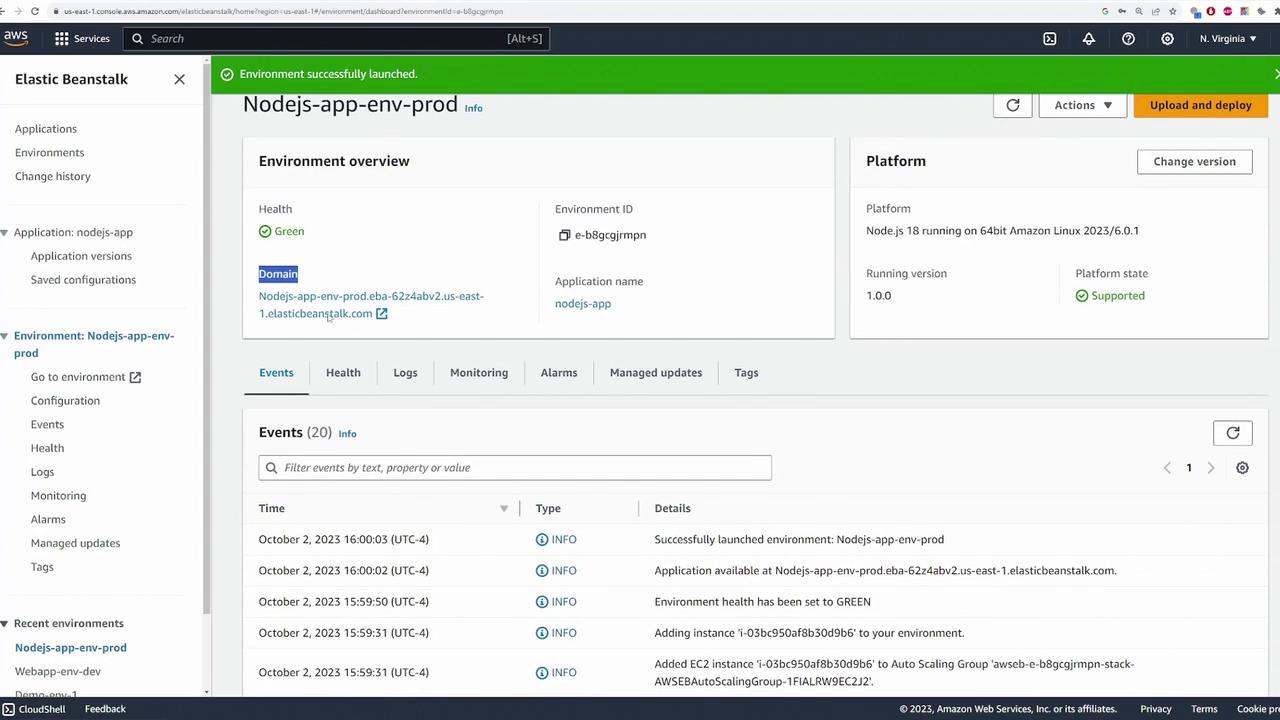
For further verification, navigate to the EC2 console:
- Under Instances, locate the running Node.js app environment instance (e.g., "Nodejs-app-env-prod").
- The load balancer and its forwarding rules, along with target groups, are also visible in the console.
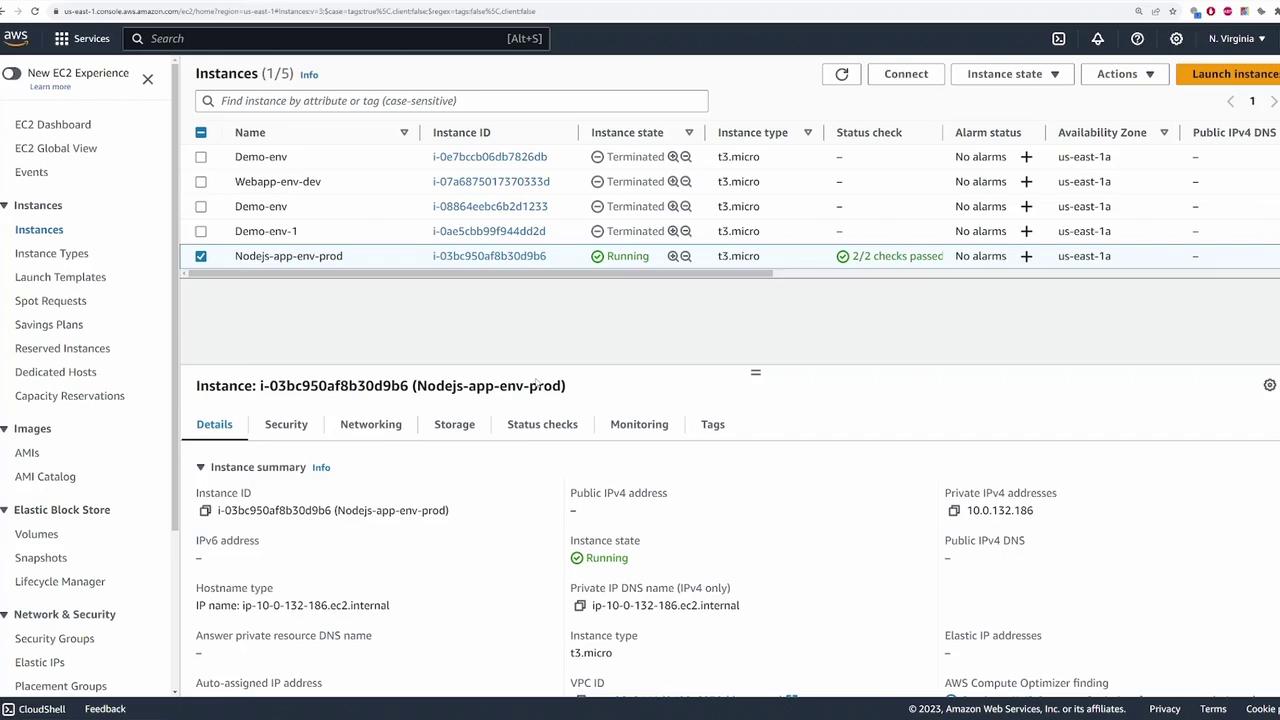
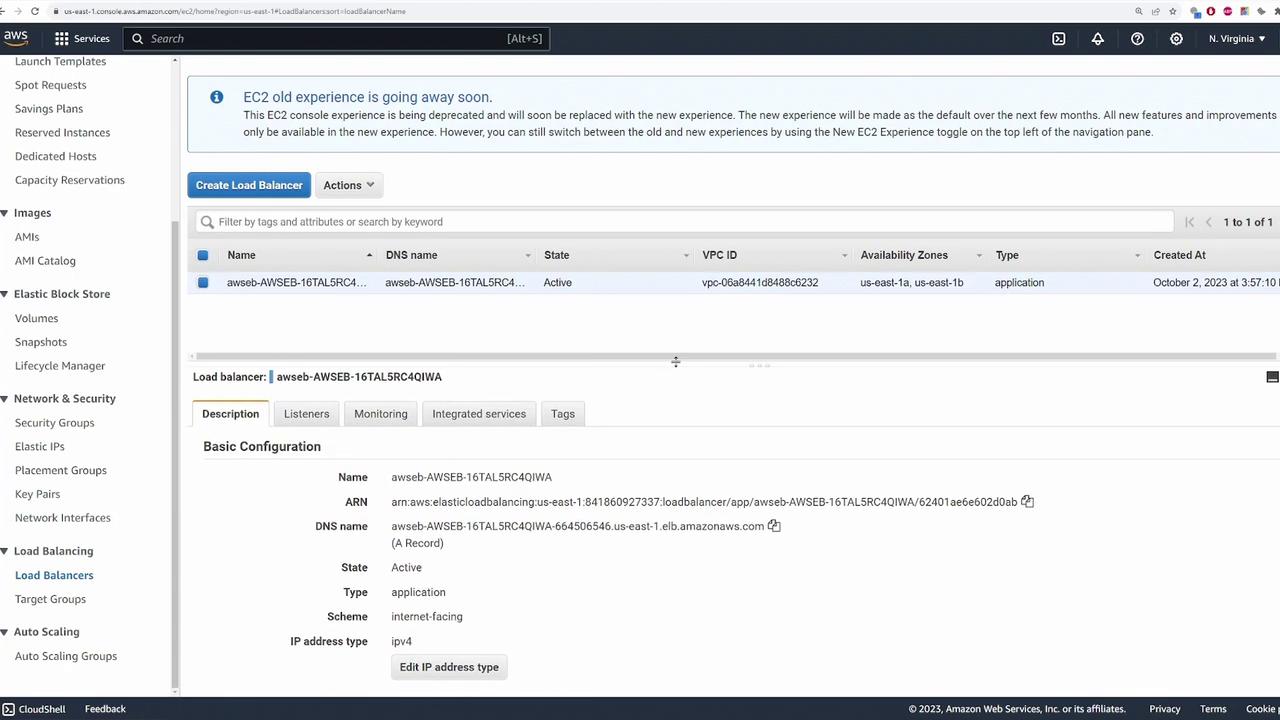
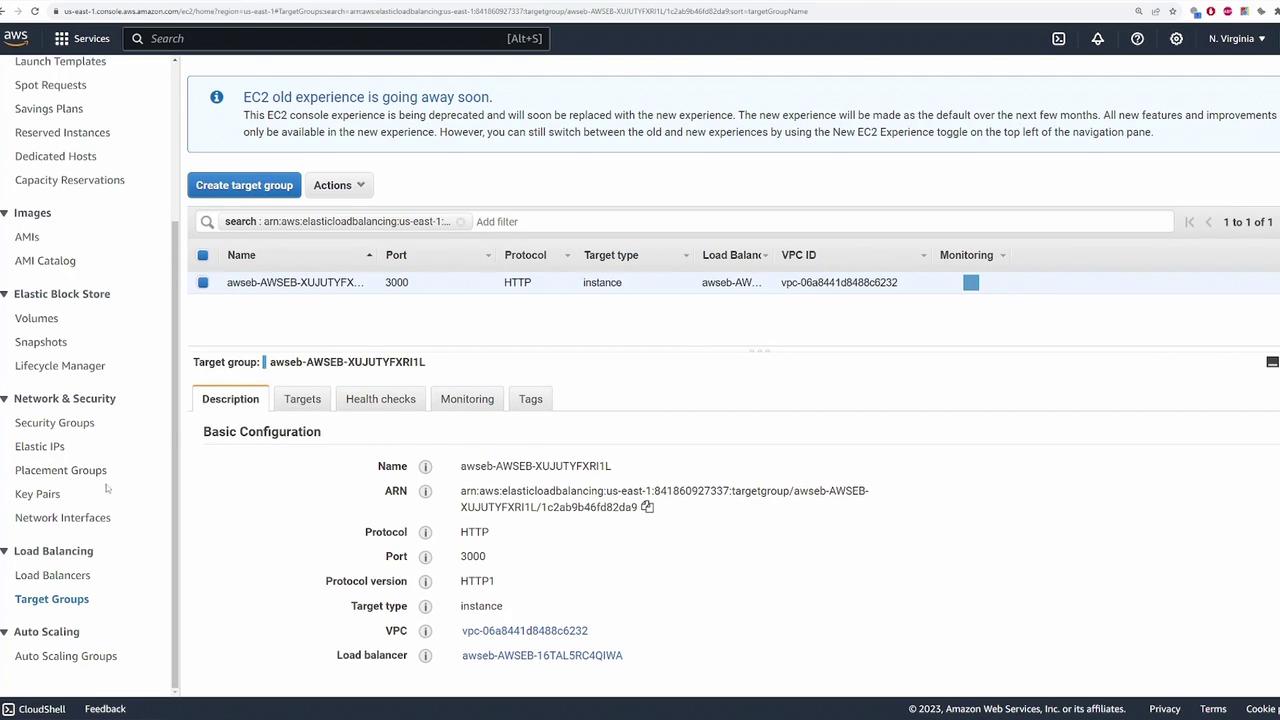
11. Updating the Application
Once your application is running, updates and new releases are straightforward. Suppose you add new features or bug fixes that require redeployment.
Follow these steps to update your application:
- Navigate back to the Elastic Beanstalk environment dashboard.
- Click Upload and Deploy to load the new version of your code.
- Create a new version label (e.g., "1.0.1") for the updated code.
Below is an excerpt from the updated HTML code and corresponding console output:
<!DOCTYPE html>
<html lang="en">
<head>
<meta charset="UTF-8" />
<meta http-equiv="X-UA-Compatible" content="IE=edge" />
<meta name="viewport" content="width=device-width, initial-scale=1.0" />
<link rel="stylesheet" href="css/style.css" />
<title>Document</title>
</head>
<body>
<h1>Elastic BeanStalk demo v2</h1>
</body>
</html>
Run `npm audit` for details.
C:\Users\sanje\Documents\scratch\eb-demo
> node index.js
Server is running on port 3000
^C
C:\Users\sanje\Documents\scratch\eb-demo
> node index.js
Server is running on port 3000
After confirming the changes locally, create a new ZIP archive (e.g., "EB demo-v2.zip") that includes all updated source files. Upload this new package, assign it the version label "1.0.1," and choose your deployment policy. The default rolling update method minimizes downtime by gradually updating instances.
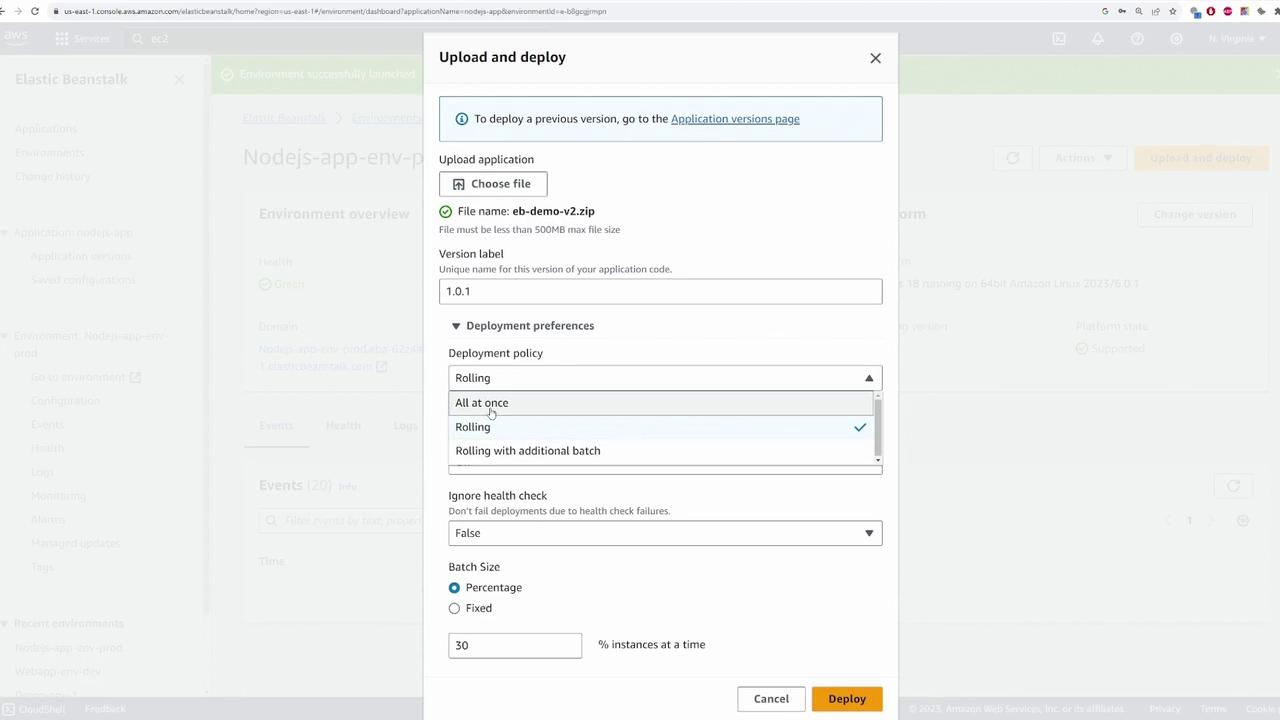
Click Deploy and wait a few minutes for the update to complete. Once finished, verify the running version on the dashboard to ensure that version "1.0.1" of your application is active.
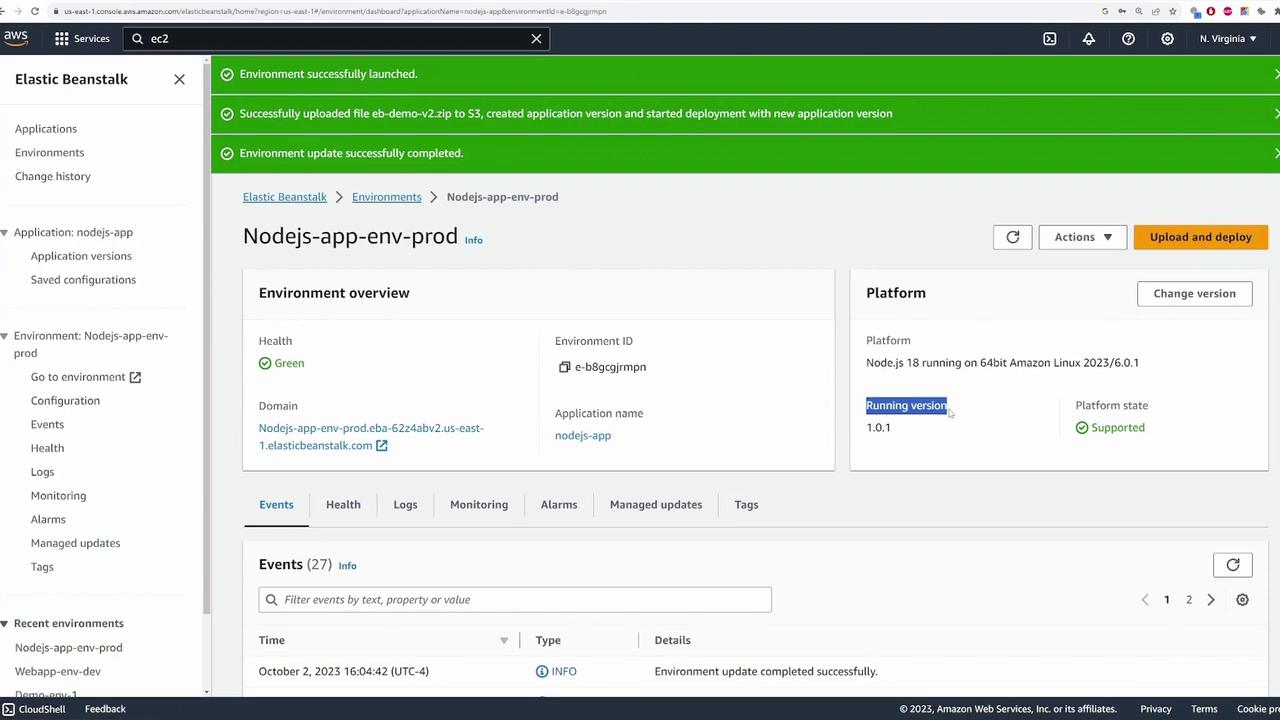
Conclusion
In this tutorial, we demonstrated how to deploy and update a simple Node.js application using AWS Elastic Beanstalk. We covered essential steps, including:
- Creating an application and environment.
- Uploading and packaging application code.
- Configuring key resources such as EC2 instances, load balancers, security groups, and auto scaling.
- Updating the application with new code revisions.
This process automates infrastructure management and provides a scalable and reliable environment for deploying web applications.
Note
Elastic Beanstalk simplifies the deployment process, making it ideal for developers who want to focus on coding rather than managing servers.
We hope you find this guide informative and helpful. For further details, read the official AWS Elastic Beanstalk Documentation.
Watch Video
Watch video content